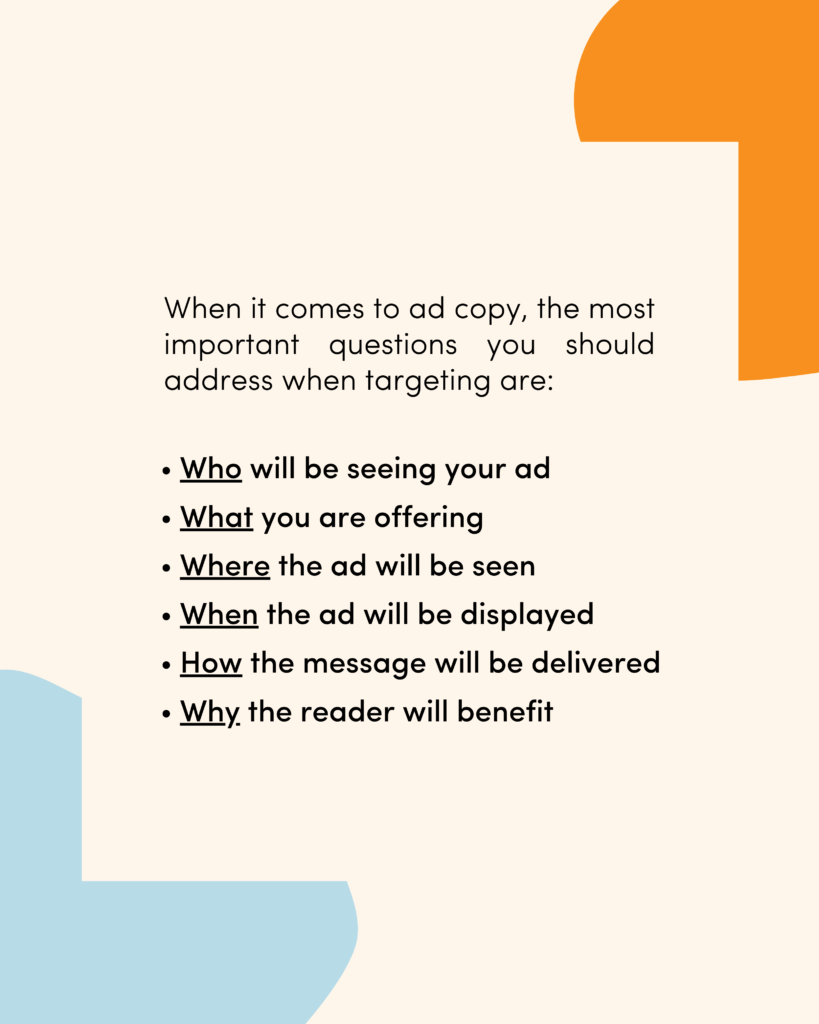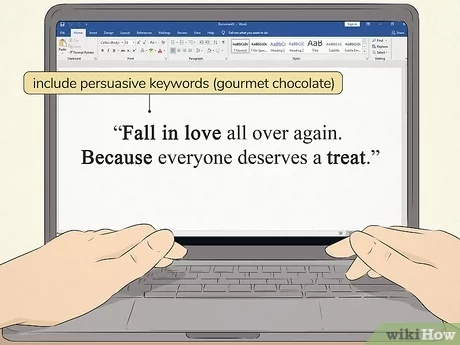5 Daily Habits You Need to Adopt to Master the Art of Copywriting

Copywriting requires commitment, a focused mind, and discipline. Without patience, practice, and perseverance, you cannot master the art of copywriting.
Now, whether your task is to write a sales page, a blog post, or content for a social media post, you must develop habits that will assist you in your copywriting process. If you are looking for an answer to how to improve copywriting, here are some habits and practices that can turn your future writing into effective sales copies.
Art of Copywriting: 5 Daily Habits to Adopt
The foundation of success in any niche depends on a dedicated routine. Establishing routines saves our cognitive energy and stores it for when we need to improvise or adapt to new situations. For writing, the modus operandi is absolutely the same. Have a daily writing routine, and you’ll find that your brilliance is ultimately more noticeable.
Here are five daily habits that will help you understand copywriting as a discipline and will guide you towards mastering the art of copywriting:
1. Learn every day
Learning is the first habit you need to inculcate as a copywriter. Start your learning process with something small; start with a topic that interests you.
Compare the same news article written on different websites and analyze the language used for each news article. Notice and understand the difference. You will notice a difference in the language used in every article you read online.
The main goal here is to learn something new every day. The more you learn, the better you will be able to write articles. The more you know the technique, the chances of failing will also decrease with time and practice. You must understand the difference between meeting deadlines and writing quality copy.
To understand copywriting better, you can also start by reading at least one successful advert a day. Advertising copy tends to be crafted intelligently. Copywriters don’t have much scope for unnecessary words, and an ad copy with limited text teaches you that.
Every single word has to count for something meaningful, and the primary message should also be conveyed. You honed your copywriting skills when you can convert leads into customers using minimum words.
Adverts are everywhere. As a writer, you should consciously pay attention to almost every advertisement. Understand why the writer has chosen a particular angle or what you could change in the ad copy to improve the advert.
2. Prepare a rough ad copy
To write a converting ad copy, you must gather several pieces of information. A good ad copy begins with thorough research. The best way to gather the information is to ask all possible questions related to your project and try to find answers to them. When working on a copywriting project, make sure you know
- What is the product or service you are trying to sell?
- What is its purpose?
- What is its suggested cost?
- The specifications and features of this product or service
- What value is it providing to the customer?
- Why is it better than competitive products or services?
- Who is the ideal buyer?
- What is the call-to-action of your message?
- How can the prospective buyer order, pay for, and use it?

These are some basic points that will help you gather information more effectively. However, if you look closely, you will notice that the list does not contain everything you need to know to write an ad copy.
The information you need to gather differs depending on the product or service you are writing for. After you have gathered all the information you need to write the copy, the next part of this step is to organize the information you have gathered. Organizing notes and information for reference will help you to write better ad copy.
Here are some headers that can help you in organizing the information you have collected:
- Description
- Objective
- Purpose
- Pierce
- Features
- Benefits
- Guarantee
- Prospect
- Offers (if any)
- Deadline
Shortcuts don’t work in copywriting artwork. The best-selling ideas and advertisements come from impeccable research and gathering of information.
The starting point of every successful advertisement is research. It takes a lot of time to achieve that flow of writing. If you are constantly doing two things simultaneously, you will never be able to write the best ad copy.
Start by writing paragraphs and not sentences. This will ensure that you have completed a significant part of the assignment. Take reference from your collected information and prepare a rough ad copy.

3. Start writing
Now that you have collected and organized the information you need, it’s time for you to start working on your ad copy.
Start with the headline. For writing the best headline, consider the prime benefits, deadline, price prospect, guarantee period, and product or service description. Choose the information you want your readers to discover first, then create a headline around it. Remember, the best ad copies have headlines that aim at conversion. Write several headlines and then choose the best from the lot.
Here are some examples of effective headlines for your reference:
- 5 Steps to make your online business successful
- Introducing the best room heater: Make your winter mornings comfortable
- How to stop smoking in 10 days
- How to identify the right educational course for a better future
- Three things you must always carry in your travel bag
- This program will help you get fit. It worked for me!
We cannot stress enough the importance of writing a catchy headline. Most readers do not care about reading the entire ad copy if they dislike the headline.
There are seven broad categories of headlines that are effective in copywriting. Let’s take a look at them:
- News: This type of headline is identified by words like ‘new,’ ‘announcing,’ ‘now,’ etc. it indicates that the text is hinting at something newsworthy. And people are always hooked on such a headline.
- Direct: A direct headline states the ad copy’s main idea, upfront. There is no beating around the bush in this case. It is crisp and clear.
- Command: When used in a headline, a command kick-starts the headline and sells immediately. It initiates a call to action directly.
- Testimonial: A customer testimonial or endorsement works way better and faster than any amount of convincing in elaborate language can do.
- Information: It is a good idea to educate your reader and give them all the information they need to purchase your end. This gets their attention and builds trust.
- Question: Questions are attention-grabbing in general. You can use them effectively while copywriting to make the reader a part of the conversation your ad copy is attempting to initiate.

- How-To: This type of headline promises a solution or a step-by-step procedure for solving a problem for the reader.
To improve your copywriting skills, start by crafting an engaging headline that hooks the reader and compels them to read further. Readers will want to know more when your headline is engaging and informative.
Once you have written the headlines, it’s time for you to start writing the subheadings. For writing the subheadings, you need to consider the following things- product descriptions, benefits, features, offers, deadlines, and guarantees that come with the product.

Select the information that you want to highlight for writing this particular ad copy. While writing the subheading, it is essential to understand the importance of each subhead and place them in the right order. Use an active voice and try to make every subheading equally informative and interesting for the reader.
Like the heading and subheading, the body copy also holds equal importance. Expand each subheading while writing the ad body.
This is the most difficult part for most writers since it requires writing the most words. However, the body copy is relatively easier once you successfully write the headline and subhead. Most copywriters spend 80 percent of their time writing headlines. However, the chances of selling increase if you can get the readers to read the entire ad copy. All you need to do is provide accurate and clear details and support the information provided by data.
The next important part of any ad copy is the CTA (call to action). This is one of essential parts of copywriting. The CTA section of the ad copy encourages readers to take actual action. This is where copywriters need to apply their marketing knowledge and creative skills and create something unique.
Review the methods used in other similar ad copies, take inspiration, and make changes to come up with your unique call to action. Talk about the special prices and offers in this section. While writing a CTA, include all information you have gathered throughout the process. The copywriting art is to be as creative with the copy as possible.
4. Edit and rewrite
Once you have successfully written the first draft of your ad copy, it’s time for you to start with the editing process. If you find yourself using semicolons and colons a lot, it’s probably time for you to start editing the rough draft.
Every ad copy goes through several edits and rewrites. You need to understand the importance of edits and ruthlessly eliminate the unnecessary while rewriting your ad copy.
Caution: Do not fall in love with your writing, and don’t be scared to make the required edits. During the process of copywriting, every word you write must add value to the ad copy and the message you want to convey. If you find any word unclear, do not be scared to replace the word with something that holds meaning. A long copy is fine. However, you need to ensure that the words used should not pull down the weight of the ad copy.
While editing and rewriting an ad copy, you need to consider a few points:
- Is the headline catchy enough? Will it be able to grab the attention of the readers, and will it be able to compel the readers to read the entire ad copy?
- Does the headline exploit any human emotion? If yes, you should focus your efforts on improving the headline.
- Does the headline convey the primary message? Is it related to the products and services you are trying to sell?
- Are you making your message loud and clear to the readers without making the text technical or full of jargon?
- Are the subheadings logical? Are the subheadings related to the primary purpose of the ad copy?
- Is the body full of facts and information?
- Will the call to action section encourage readers to take action required? Will they purchase the product?
Once you have the answers to all these questions, the editing or rewriting process becomes effortless.
5. Review
Just like the previous step, this step is equally important. While you might think you have mastered copywriting with the first four steps, it is crucial to review your copy yourself. Start by reading the entire edited draft, and if you still find anything you don’t like, don’t hesitate to change it.
Here are some tricks that you can apply to smartly and effectively review your advertisement copy:
- The 5-second test
Before you publish the final draft, it is always better to get it approved. Show your ad copy to some of the target audiences you might know personally and get their feedback. If your target audience cannot understand the advertisement’s objective, it will probably not be effective.
Don’t make changes in the body copy but make changes in the headings and subheadings. The chances of your headings not being engaging enough can be higher than the copy being boring.
- List the negatives
Understand what is wrong with the headline or the subheading and make changes accordingly. Will the call to action encourage readers to take action? If not, change the CTA. Try to assess and understand the negative parts of your ad copy and make changes accordingly.
Once you understand the changes that need to be made and are satisfied with the outcome, it’s probably time for you to publish the ad copy.
Key Takeaways
- The art of copywriting requires commitment, practice, and discipline.
- The task of copywriters is to produce clear and engaging copies for different channels of advertising that a company/ brand is using to market its products and services.
- An ad copy does not have scope for unnecessary words. The copywriter’s job is to convey the message effectively through limited text.
- Thorough research and organizing the information is a crucial step in copywriting.
- A clear CTA is one of the essential parts of copywriting. It encourages the reader to take action.
- You must eliminate the unnecessary while editing and rewriting your ad copy.
- Before you publish the completed draft, review it, list the negatives and make changes accordingly.
Final Words
You need to adopt these daily habits to master the art of copywriting. However, apart from these basic habits, you can also incorporate some tricks and tips to make your ad copy interesting. Nowadays, several masterclasses, video tutorials, e-books, and modules are available on mastering copywriting.

FAQs
As a copywriter, it is essential to have strong interpersonal and communication skills. It is an added advantage if you are good at research problem solving and have a knack for creative thinking.
To inculcate copywriting in your daily schedule, you can start by reading copywriting books, writing a few new headlines and leads each day, creating a wipe file of classic copywriting examples to learn from, and studying those examples.
Some elements of copywriting that are crucial in driving sales are- a sound knowledge of your target audience, limiting your reader’s choices, risk reversal, compelling and catchy headlines, and using bullet points in the copy text.
There are several major types of copywriting. Some of them are- social media copywriting, direct response copy, technical copywriting, public relations copywritng, SEO copywriting. One of the recently emerging fields of copywriting is Though Leadership copywriting.
To choose a copywriting niche that best suits you, look to your past experiences and skills. Create a niche diamond for yourself after you have figured out your field of interest.
Latest Blogs
Explore how Google’s 2025 AI search updates triggered ranking chaos. Learn actionable strategies to adapt your SEO for AI Overviews, zero-click searches, and SERP volatility. Stay ahead now.
Learn how to rank on AI search engines like ChatGPT, Perplexity, and Gemini by optimizing your content for authority, structure, and relevance. Stay ahead in AI-driven search with this strategic guide.
Explore the best healthcare SEO services for your medical practice. Improve online visibility and effectively reach more patients in need of your services.
Get your hands on the latest news!
Similar Posts

B2C Marketing
5 mins read
Top Choices for Best Content Marketing Services in B2B Industries

Artificial Intelligence
5 mins read
How A Lead Generation Specialist Can Use AI-Powered Content Funnels to Drive Conversions

Artificial Intelligence
4 mins read